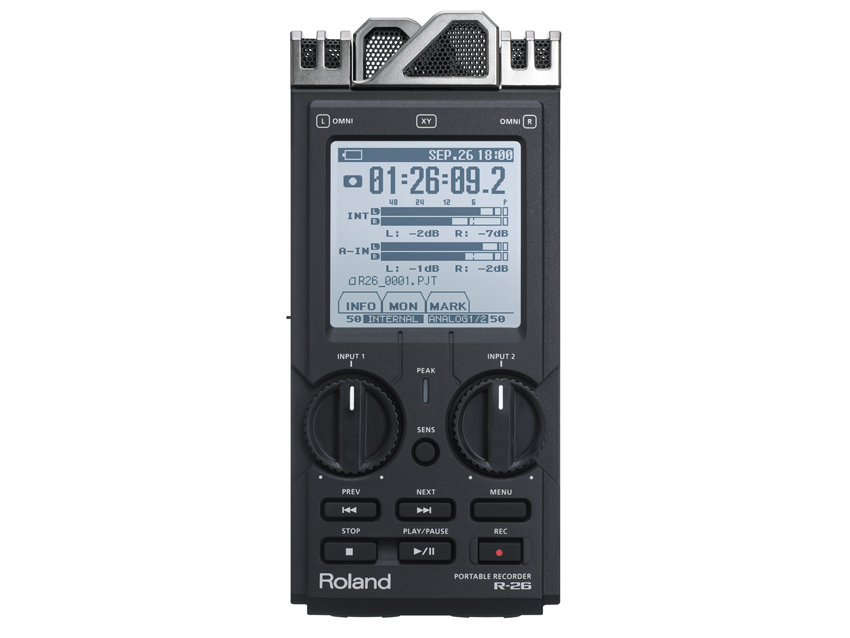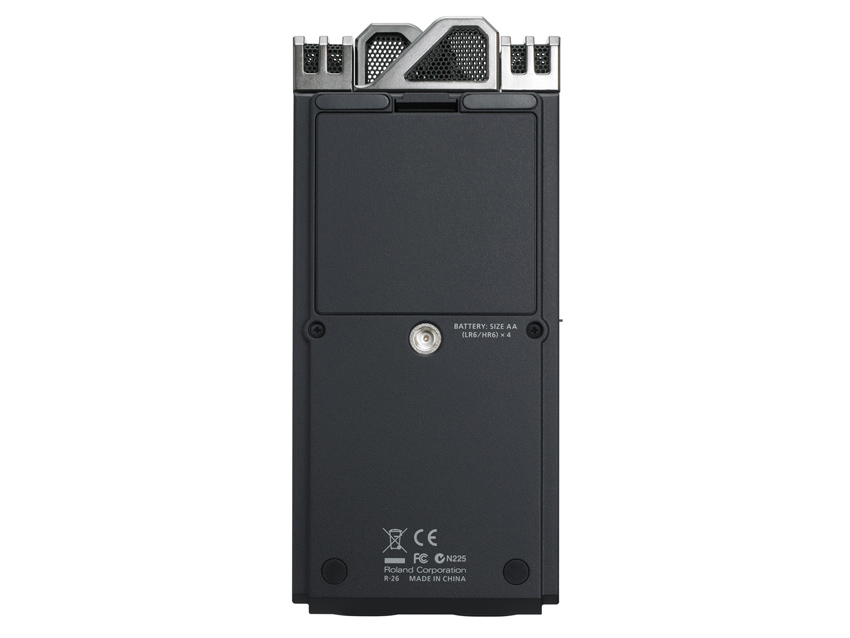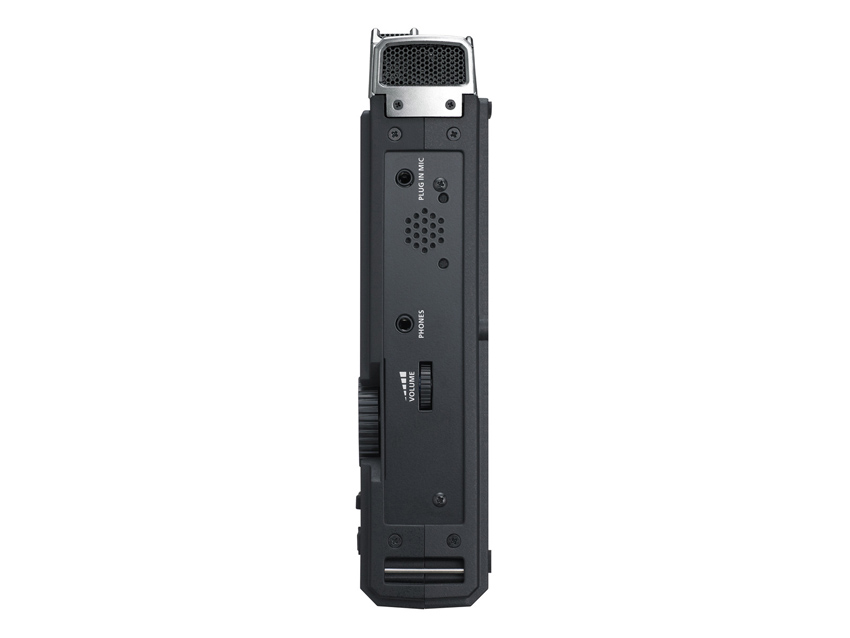Roland unveils R-26: six-channel portable recorder

Roland R-26

Roland R-26 rear

Roland R-26 left side

Roland R-26 right side

Roland R-26 top

Roland R-26 bottom
There are now so many handheld recording devices on the market that to stand out you've got to up the ante. And that's exactly what Roland has done with the R-26, a device that enables you to record six channels of audio simultaneously.
As such, there's the potential to use this to record a band or other musical ensemble - recordings can either be mixed down to stereo automatically or stored as three separate stereo files. There are two built-in mics, plus a variety of inputs. Click here to see a gallery of photos.
Read on for all the official details from Roland. The R-26 will ship in October and is expected to cost £349.
Roland R-26 portable recorder press release
Roland is pleased to announce the R-26 Portable Recorder, a handheld device that provides up to six simultaneous channels of pro-quality audio recording to SD/SDHC media. With two types of built-in stereo mics, XLR/TRS combo inputs, USB audio interface function and much more, the compact R-26 is perfect for demanding applications such as solo and ensemble music recording, environmental sound capture, broadcasting, and audio/video production.
Designed from the ground up for superior sound quality and ease of use, the R-26 is filled with features that will satisfy both pros and hobbyists alike. For the ultimate mobile flexibility, the R-26 can be powered either with the included AC adaptor, four internal AA batteries, or an external battery.
Two stereo mic types—omnidirectional and XY—are integrated into the R-26's stylish chassis, providing mic options to suit any style of audio recording. In addition, there are two XLR/TRS combo inputs with phantom power for connecting external mics or line-level devices, plus a stereo mini-jack for a plug-in powered mic. The preamps for all mic channels are derived from the hi-res preamps found in Roland's R-44 commercial field recorder.
Audio from the onboard mics and external inputs can be mixed internally in the R-26 and captured to a single stereo file, or can be recorded as three separate stereo files (six channels total) for mixing together later. Resolutions up to 24-bit/96 kHz are supported, and available file types include WAV and BWF. MP3 is supported as well, and the unit can record both WAV/BWF and MP3 formats simultaneously.
Want all the hottest music and gear news, reviews, deals, features and more, direct to your inbox? Sign up here.
The R-26's large touch screen provides detailed level metering and convenient fingertip control over many functions, and is equipped with a high-luminance backlight for perfect visibility in any situation. Hardware controls are ergonomically organized and clearly labelled, with large input level knobs for precise adjustments, and dedicated buttons for often-used functions. The R-26 also features AUTO-SENS for setting input levels automatically, as well as onboard waveform editing.
USB 2.0 allows for both data transfer and audio interface capability with Windows and Mac-based computers. Users can connect the R-26 and use its built-in mics and external inputs as a high-quality input device for their favourite audio recording software. Loop-back recording is also supported, allowing multimedia users to combine audio from the R-26's mics with streaming audio from the PC. The R-26 comes with Cakewalk's SONAR X1 LE, a professional Windows-based DAW for general audio production in addition to mixing and processing R-26 recordings.
With its rear-panel mount, the R-26 can be easily installed on any standard camera tripod stand, or on a mic stand with an optional adapter. An extensive line of accessories is available to complement the R-26, including the OP-R26CW Cover/Windscreen and the CS-10EM Binaural Microphones/Earphones to name a few.
The R-26 Portable Recorder will be available in October with a street price of £349.

I’m the Deputy Editor of MusicRadar, having worked on the site since its launch in 2007. I previously spent eight years working on our sister magazine, Computer Music. I’ve been playing the piano, gigging in bands and failing to finish tracks at home for more than 30 years, 24 of which I’ve also spent writing about music and the ever-changing technology used to make it.